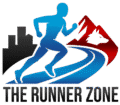This post contains affiliate links. If you click and buy, I may earn a commission at no extra cost to you. I only recommend brands and products that I personally trust and believe in.
Running isn’t as simple as “just put one foot in front of the other.” If it were, more people would stick with it.
Maybe you’ve tried to start running before – only to stop after a few painful weeks. Maybe you’ve spent hours Googling gear, pacing strategies, or even how to start running when you’re out of shape.
Maybe you’re convinced real runners are born with something you don’t have – motivation, discipline, or better knees.
But here’s the truth: You don’t need perfect gear, a runner’s body, or natural speed to begin. You need something far more powerful – the willingness to start slow, stay consistent, and ignore most of the noise.
This beginner’s running guide is for anyone who feels overwhelmed, underprepared, or just plain stuck. We’ll break running down into something real and doable – even if you’ve burned out before or feel like you’re starting from zero (again).
You’ll get no-fluff advice, personal stories, beginner-friendly tips like the run-walk method, and starter gear suggestions that won’t break the bank.
Because running doesn’t have to be complicated.
It just has to begin.
1. Starting Is the Hardest Part
Table of Contents
ToggleIn summer 2023, I did what many of us do during a break – I let go. Food, rest, and a bit of indulgence. It felt deserved after years of nonstop work. But instead of feeling recharged, I felt drained. Physically and mentally.
I kept telling myself I was taking a well-earned break. But deep down, I knew something was off. I didn’t feel like myself. I was stuck in a loop of overthinking and low energy – and I realized that if I didn’t shift gears soon, I’d spiral further.
That moment of honesty with myself was the spark.
Even with that awareness, I didn’t start running right away. I was scared. I remembered how hard it felt last time. What if I failed again? What if I didn’t have time? What if I had to sacrifice something else? The more I thought, the heavier it got.
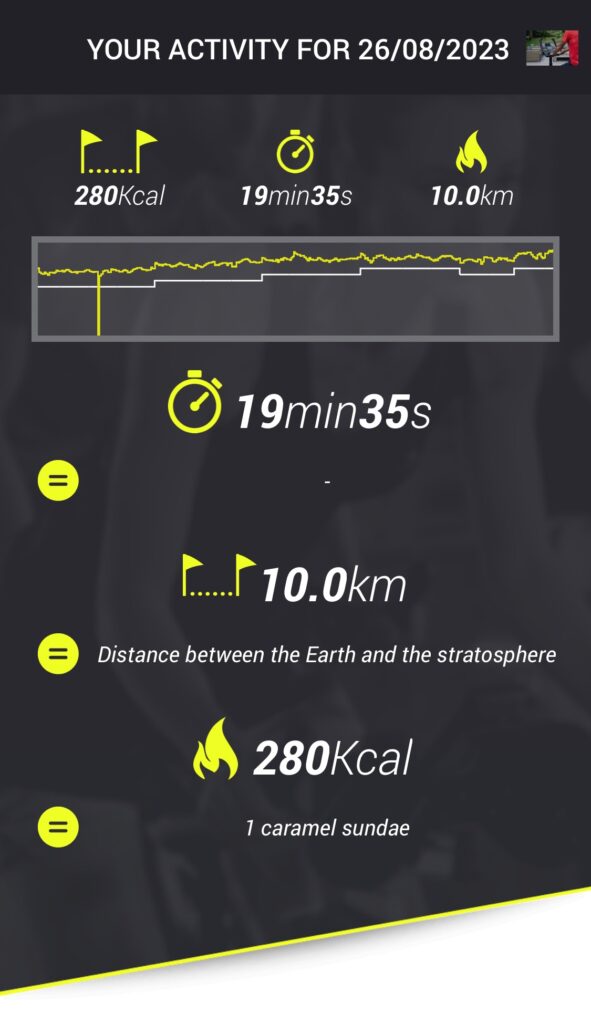
So instead of jumping into running, I got on a stationary bike. Less impact, less resistance – but just enough to prove I could commit again. I made a rule: every session, 10 km minimum. It gave me structure and early wins. While pedalling, I researched how to run smarter.
One book that really helped me understand the basics was The Complete Running & Marathon Book. It’s packed with practical advice and visuals that made the fundamentals click for me.
After a week or two, I swapped one bike session for a short run. Then another. Eventually, I was running three times a week – sometimes hopping on the bike for fun. No pressure. No perfection. Just showing up.
That’s how I got unstuck.
Start where you are. Don’t wait for perfect conditions.
Tip: If running feels intimidating, start with cycling, walking, or swimming. Motion builds momentum.
Chapter Summary: | The hardest part of running isn’t physical – it’s mental. Get moving in whatever way feels most doable. Small, consistent action beats overthinking every time.
2. Forget Everything You Think You Need
When I decided to run again, I had this voice in my head: “Don’t I need a bunch of gear first?”
Social media didn’t help. Everyone looked like a catalog model – compression socks, heart rate straps, shiny sunglasses, €200 shoes. It felt overwhelming. But once I looked closer, I realized most of it wasn’t essential. Not at first.
What Actually Mattered
What mattered most? Running shoes – real ones made for your gait and body. Not the old all-purpose sneakers from 2015.
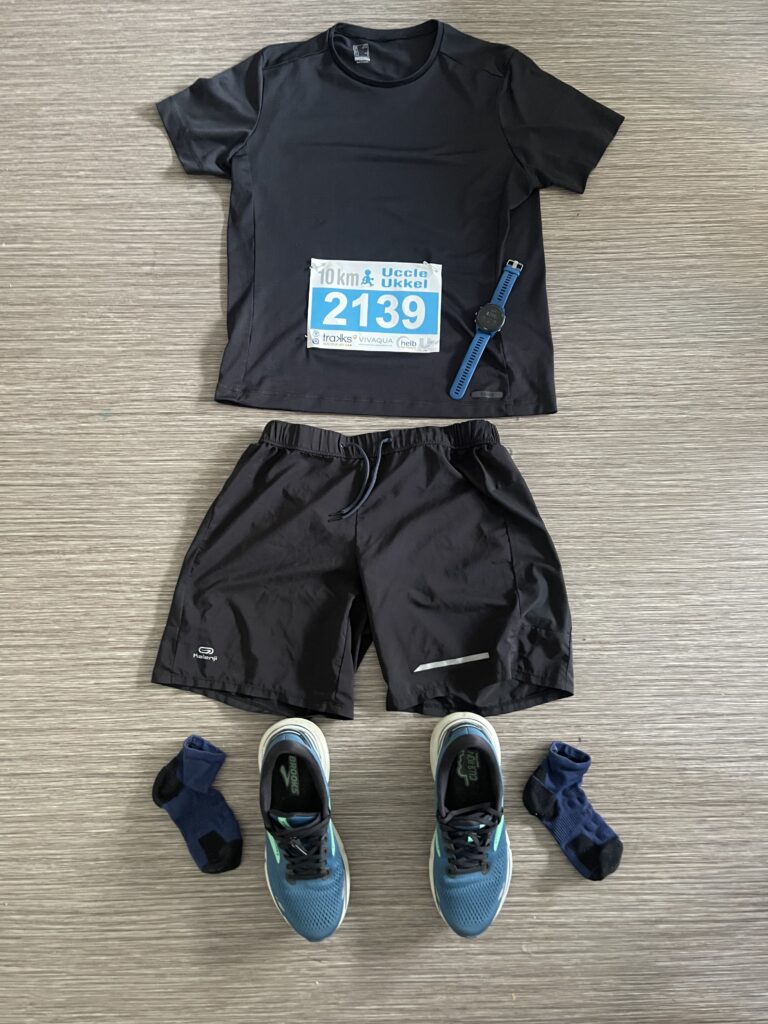
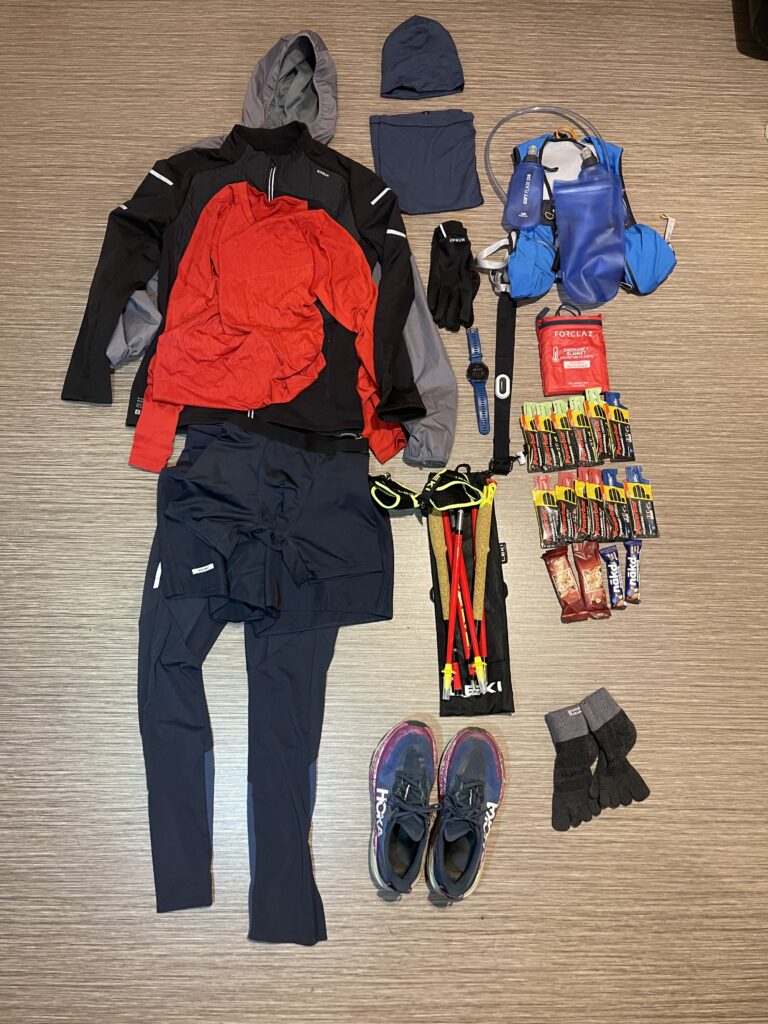
Before doing my first gait analysis, I was already running a bit. I made small upgrades as I went:
- Technical socks
- A breathable shirt
- Better boxers
They weren’t expensive but made a big difference in comfort. These small rewards helped me build momentum.
I made a deal with myself: Run a 5K race. If I finish in the desired time, I’ll invest in good shoes. I picked a small local 5K and finished it with pride. That goal became my first big motivator. When I earned it, I got properly fitted and bought shoes that finally felt right – the Brooks Ghost 15.
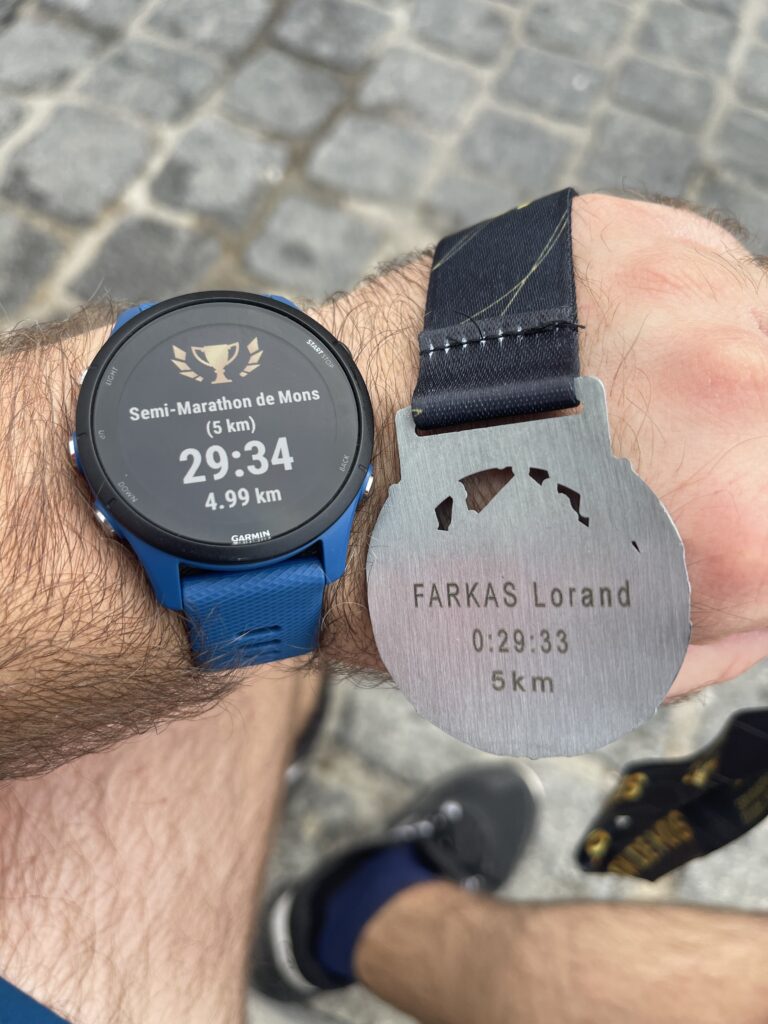
Before that, I was getting away – just barely – with cotton shirts, socks, and boxers. Not ideal, but it worked for short runs.
Each item felt like a mini reward. A milestone.
Gear won’t make you a runner. But comfort will keep you going.
Tip: You don’t need perfect gear to start – but if you can, get fitted for shoes at a specialty running store.
Chapter Summary: | All you really need to start is the right pair of shoes. Add the rest as you go – not to look the part, but to make the experience better.
3. Run-Walk (It's Not Cheating)
I had a routine. I had a goal – finish a 5K and earn new running shoes. Finish a 10K and reward myself with a watch. But then a friend mentioned his Garmin Fēnix 6 and its built-in coaching plan.
That’s when I “cheated” a little… and got the prize early. I checked out his watch and saw the newer model – the Garmin Fēnix 7 – was amazing, but way out of budget. I wanted something capable, but less pricey.
I chose the Garmin Forerunner 255 – one of my best running investments. It’s a GPS multisport watch offering many premium features without the premium price.
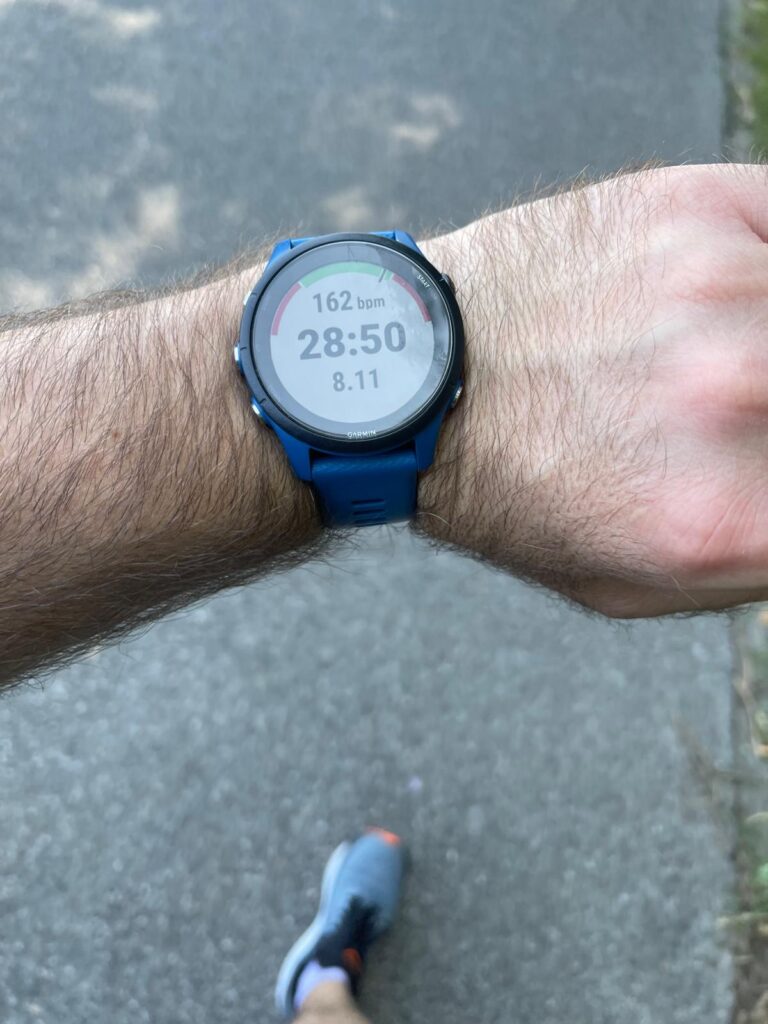
Discovering the Run-Walk-Run Method
That’s how I discovered Jeff Galloway’s Run-Walk-Run method. It’s simple: run a bit, walk a bit – on purpose. Not because you’re tired, but to recover mid-run and go farther with less fatigue.
I started with 5 minutes running, 3 minutes walking. Some may begin with 1:1 or 2:3. Over time, I ran more, walked less (sometimes slow-shuffled), and felt stronger. My heart rate was steadier, breathing easier, confidence higher.
It wasn’t just about pace – it was structure. That’s what Galloway teaches.
The Four Types of Training Runs
He recommends four run types to help you adapt:
- Goal Pace Repeats – run at race pace to learn rhythm
- Speed Repeats – faster bursts for leg strength
- Hill Repeats – short climbs to improve form
- Long Slow Runs – relaxed pace every other week for endurance
Using this mix helps you get stronger without burnout. Run-walk works for each type.
Could I have done this without the watch? Sure. A timer app and a good plan would work. But having intervals built into the Garmin made it way easier to stay on track.
Walk breaks don’t make you weak. They make you wise.
Tip: Start with manageable intervals. Adjust as you go – more running, less walking. Consistency beats speed.
Gear Note: Thinking about a running watch with interval training and coaching? The Garmin Forerunner 255 offers great value.
Chapter Summary: | The Run-Walk-Run method is beginner-friendly, scientifically sound, and builds endurance while protecting joints. It’s not cheating – it’s smart, structured training.
4. Stick to 3 Runs Per Week - That's Enough
As I got consistent with running and followed the Run-Walk-Run method, I made progress. I breathed easier, ran farther, recovered faster. I was hooked.
Too hooked.
I started squeezing in extra runs on rest days and ramping up mileage too quickly. Then it happened.
What started as a dull knee ache turned into sharp pain. I shrugged it off and tried to run again, hoping a warm-up would help.
Wrong.
The pain flared during the warm-up, and I had to walk back home. That was my wake-up call.
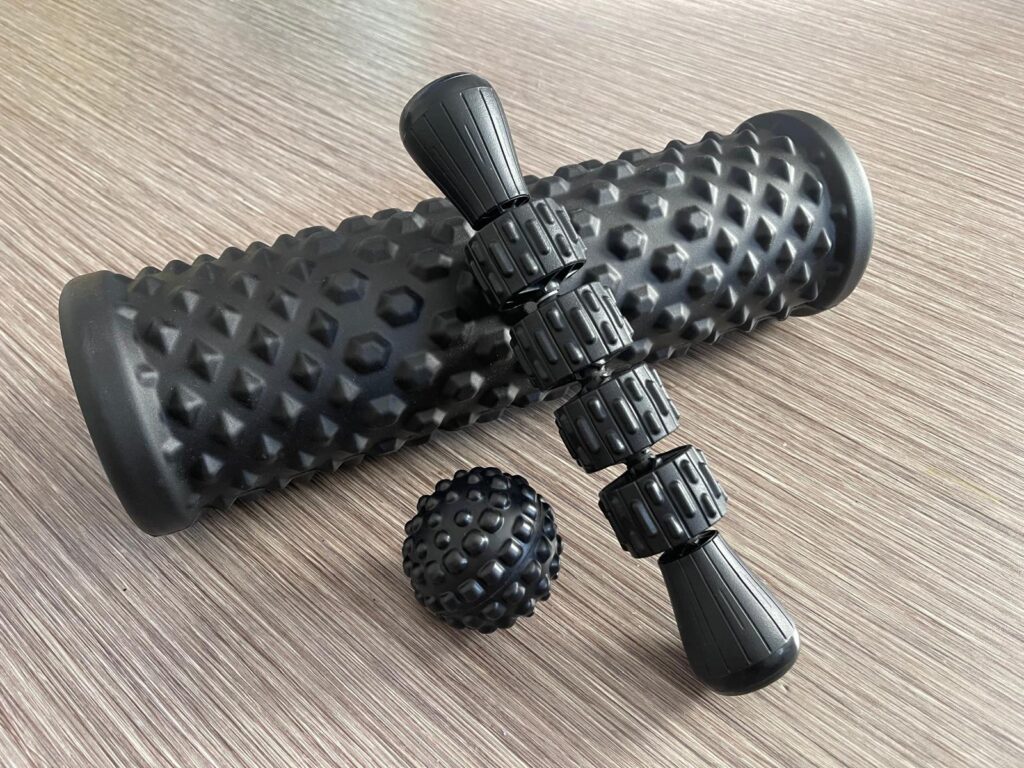
Three Is Enough
Rest days aren’t filler. They’re where recovery and adaptation happen. Skipping them set me back and nearly wrecked my motivation.
Three quality runs per week are enough for beginners – especially with run-walk intervals. You’re not just logging miles. You’re building a solid foundation.
Want to increase mileage? Follow the 10% rule: never increase weekly volume by more than 10%. That simple guideline helps avoid injury.
More isn’t better. Smarter is better.
Tip: Catch small pains early. Don’t push through when your body’s asking for rest.
Chapter Summary: | Stick to three runs per week, rest well, and follow the 10% rule to build safely. Recovery is progress.
5. Go Slower Than You Think You Should
At first, I didn’t understand pacing. “5K pace”? “Marathon pace”? It sounded like elite-level stuff. I just wanted to finish a few kilometers without collapsing.
Garmin’s adaptive training plans and the run-walk method suggested pace targets. Some felt too slow – like walking. I worried people would judge me as they zoomed past.
But I stuck with it.
Soon, I noticed improvements. Breathing was easier. My form felt smoother. I ran longer without burning out.
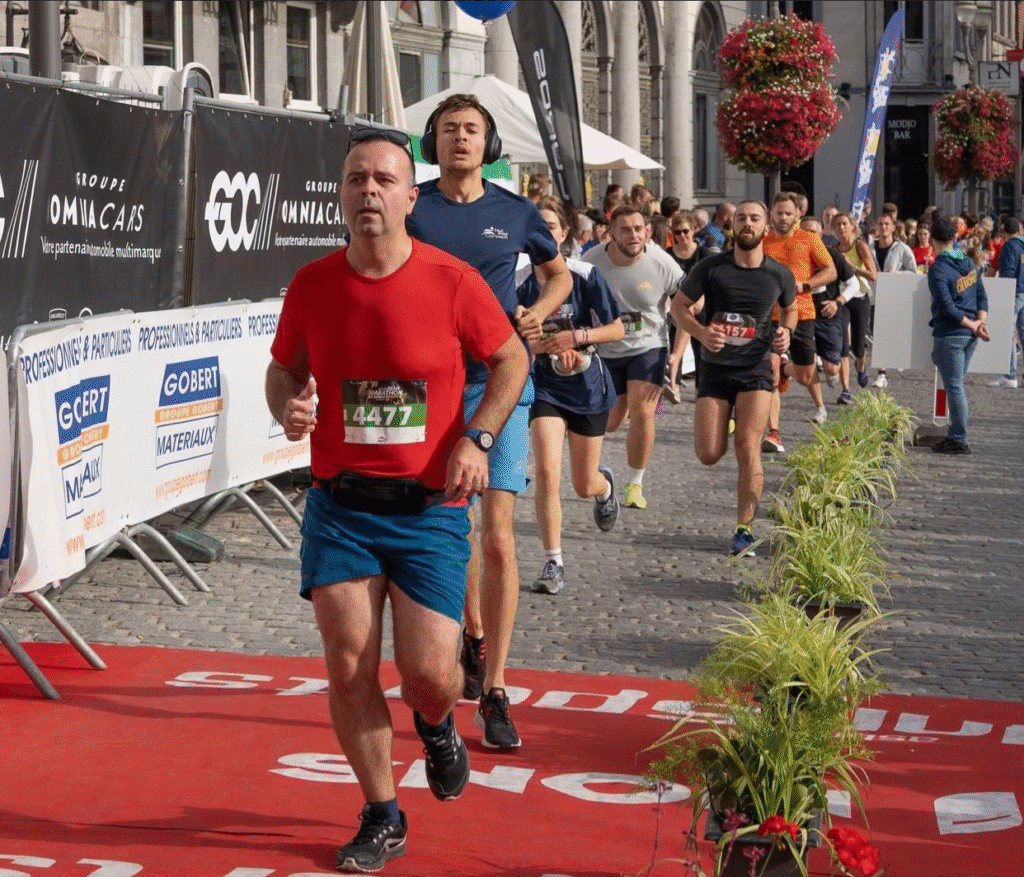
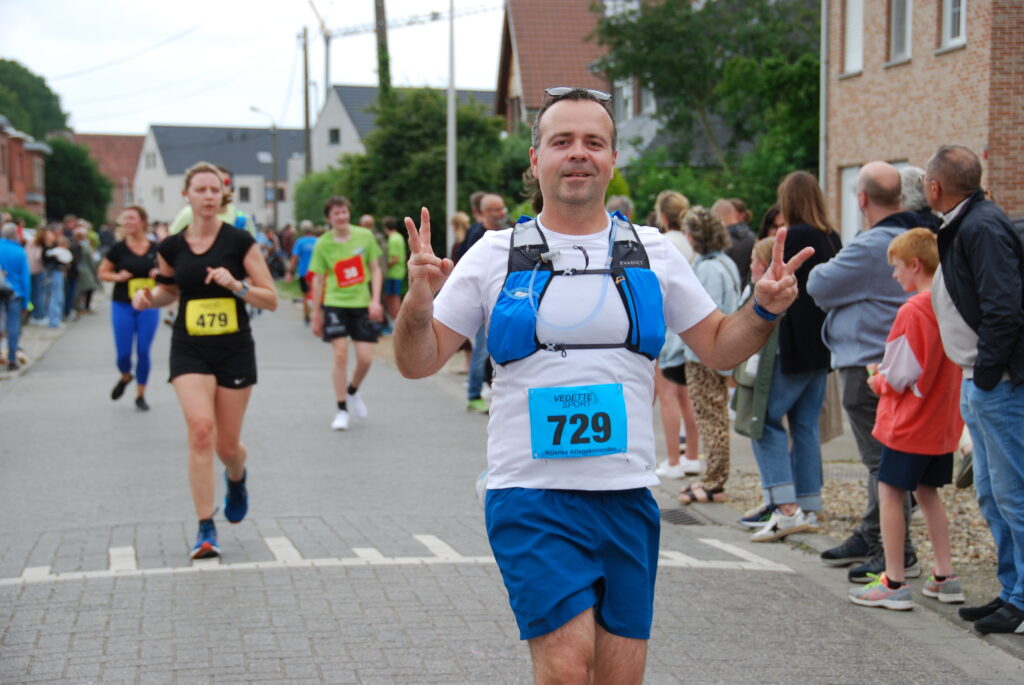
Why Slow Works?
Running slowly builds your aerobic base – the foundation for speed later. You need to run easy before you can run fast.
Use the talk test: if you can hold a conversation while running, your pace is right.
Let go of ego. Smile, wave, say hi. You’re not a beginner – you’re a runner in progress.
Tip: Slow is smart. Elite runners train easy most of the time – and they know what they’re doing.
Chapter Summary: | Running slower helps your body adapt. It builds endurance, prevents injury, and makes you stronger in the long run.
6. Track Progress Without Obsessing
Progress is subtle. You won’t see a difference from run to run – but over weeks, it adds up.
How to Track It?
I used Strava‘s free plan. It tracked pace, time and distance. Later I paired it with Garmin Connect for deeper insights.
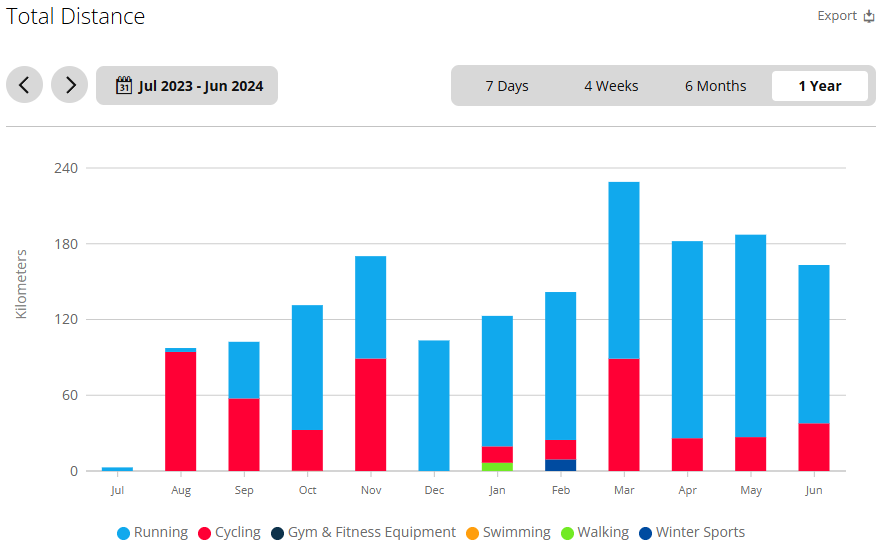
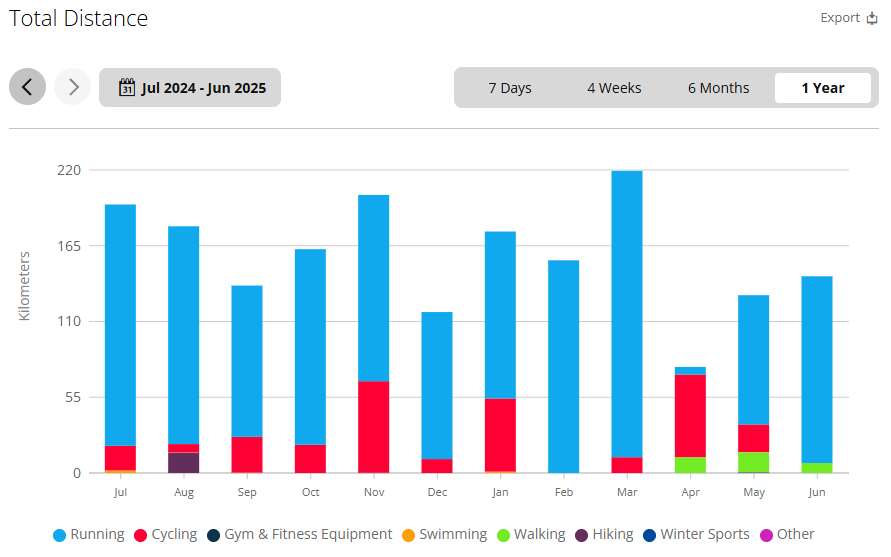
Apps are great for seeing trends. You can spot improvements in mileage, pace, and consistency.
But don’t forget how you feel. Write simple notes:
- Was it harder than usual?
- Did your legs feel heavy?
- Any pain or unusual fatigue?
Celebrate Small Wins
Track your total distance. Hit 50 km? Reward yourself with a shirt. 100 km? Maybe socks. These milestones keep the momentum going.
Tip: Reflect monthly. Check stats and notes – what’s working, what’s not?
Chapter Summary: | Track your runs and how you feel. Celebrate small wins. Use data to spot progress, not to chase perfection.
7. Beginner Running FAQ
Q: What if I miss a run?
A: Just pick up where you left off. One missed run won’t derail your progress.
Q: Can I repeat a week?
A: Yes! If a week felt hard, repeating helps build confidence.
Q: What shoes should I get?
A: Get a gait analysis and proper running shoes from a specialty store.
Q: Do I have to run nonstop?
A: No. Run-walk intervals are a smart way to build endurance safely.
Q: What pace should I aim for?
A: Go slow. If you can talk while running, you’re doing it right.
Q: Is three runs a week enough?
A: Absolutely. Rest days help your body adapt and grow stronger.
Q: How can I stay motivated?
A: Track progress, reward milestones, and keep showing up. That’s where results happen.
8. Conclusion: Start Simple, Stay Consistent
You need a trigger and a strong why to start. Begin with good shoes, ideally after a gait analysis. Don’t stress about gear – add it gradually.
Warm up dynamically, then do a short walk/run before the main session. Cool down with walking and static stretches.
Use run-walk intervals, follow the 10% rule, and run 2–3 times per week. Rest is just as important.
Keep showing up. Track what matters. Celebrate your progress.
Most importantly – enjoy running!
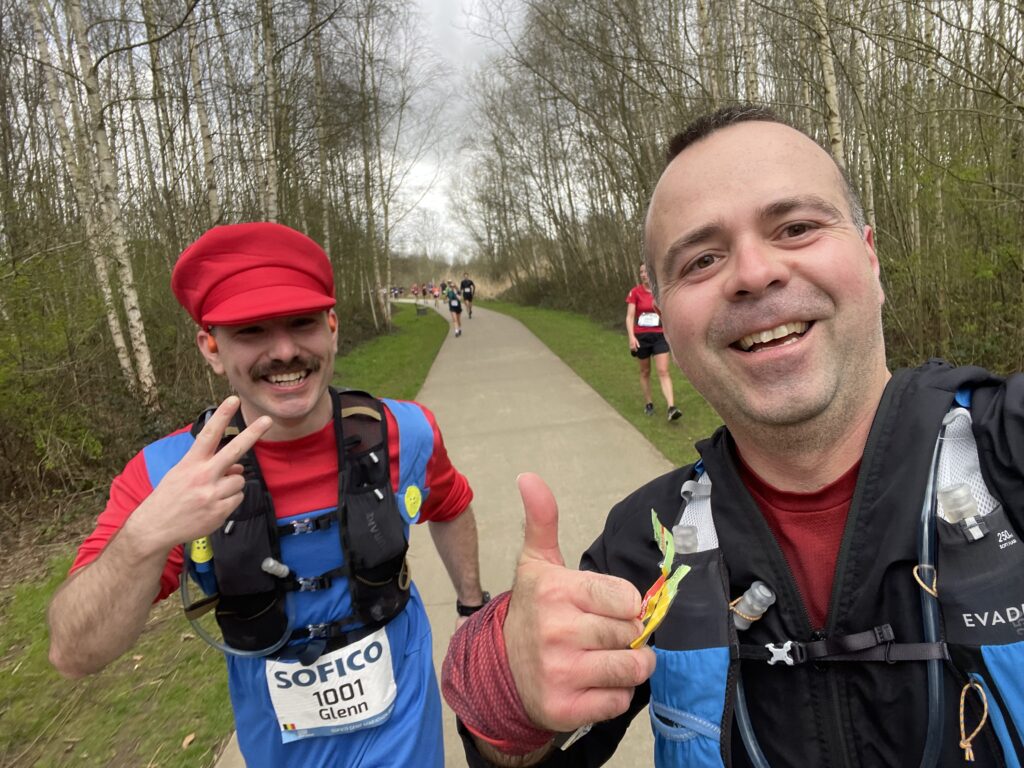
Ready to take the first step? Lace up, go for a short run, and let me know how it goes – your journey starts today.
Chapter Summary: | Start your running journey with the right foundation – proper shoes, comfortable clothing, and a sustainable approach. Consistency beats intensity for beginners, and learning from others’ experiences will help you avoid common pitfalls.
